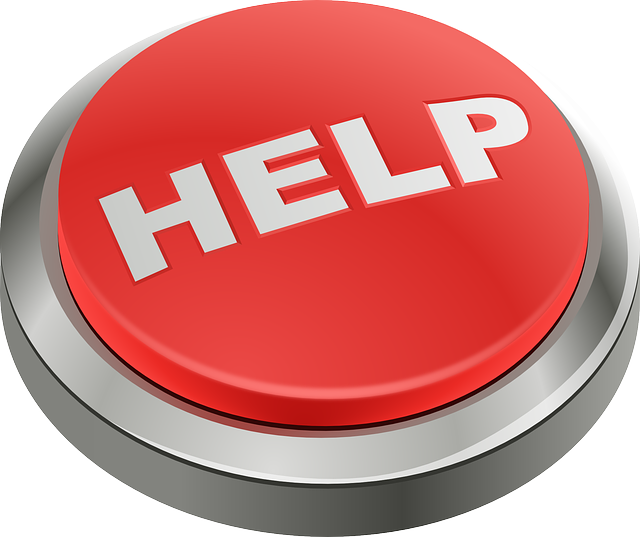Establishing Professionalism and Organization: The Importance of a Well-Designed Title Page for Lab Reports
The title page of lab report serves as the introduction to your research. It gives crucial details including the experiment’s title, author’s name, affiliation, and submission date. These components are essential for building your work’s legitimacy and a solid professional foundation.
You may grab the reader’s attention and make a good first impression by making a visually appealing title page. The title page of lab report overall aesthetic appeal reflects your dedication to professionalism and is aided by legible fonts, proper font sizes, and a balanced arrangement.
A well-organized title page of lab report also improves the organization of your lab report. Readers can quickly identify and access important information by incorporating the relevant components in a standardized format, such as the experiment title, author’s name, and affiliation. This company establishes a positive tone for the entire report, making it simple for readers to read.

Key Components of a Professional title page of lab report: A Manual for Presentation
The experiment title is the first component of a title page of lab report. It should succinctly and clearly describe the nature of your study. Readers may quickly determine the focus of your study by looking at the experiment title, which acts as a signpost for them.
The name of the author is the second component. The inclusion of the names of all authors who contributed makes sure that credit is given where credit is due. The writers’ names must be listed in the correct order, usually using a standard format like first name, last name.
The authors’ institutional or organizational affiliations are then listed in the affiliation section. This information strengthens the credibility of your work and aids readers in understanding the context of the research.
Last but not least, the title page of lab report submission date reveals when it was turned in. This component verifies deadline compliance and is essential for referencing.
Your title page of lab report should have these essential components in order to give readers the information they need and to make a professional presentation. The orderly organization of these components makes for simple navigation and improves the readability of your title page of lab report as a whole.
Guidelines for Professional Formatting: Best Practices for Designing an Effective title page of lab report
Font selection and structure are two of the best practices for a title page of lab report. To ensure readability, it’s crucial to select a typeface that is clear and readable. It is advised to use a common typeface with the proper font size, usually 12 points, such as Times New Roman or Arial.
For the title page of lab report, proper alignment and space are also crucial factors. The experiment title, author name, affiliation, and submission date all need to be evenly spaced and aligned. This results in a balanced and attractive arrangement.
Another crucial component of a well-designed title page of lab report is design consistency. Make that the title page’s font, size, and formatting choices are all consistent. This results in a unified and polished appearance.
Tips for Writing a title page of lab report Impressive Title to Grab Readers’ Attention
A catchy title not only draws readers in, it also gives them an idea of what your title page of lab report will be about. To captivate readers and establish the tone for your research, you must create an intriguing title for the title page of lab report. This post will discuss how to write a title that piques readers’ interests and compels them to read your lab report in greater detail.
The experiment title should be written with clarity and succinctness in mind. Your research’s primary subject should be appropriately conveyed in the title page of lab report, which should also be succinct and direct. Avoid names that are too long or complicated since they may confuse or turn readers away.
Think about adding more pertinent information to the title that sheds light on the particular experiment or research question. This increases reader interest and helps them comprehend the breadth and importance of your work.
Its attraction can also be increased by using wording in the title that is dramatic and evocative. Use powerful verbs and precise terms to draw attention to the distinctive features or findings of your research. This not only grabs the attention of the reader but also conveys the importance of your title page of lab report.
Last but not least, when creating the title page of lab report, think about the tone and audience. Whether it is an academic or scientific audience, adapt the language and approach to fit. A good mix between instructive and interesting language will encourage readers to read more.
The Importance of Formatting and Organization on title page of lab report
A title page of lab report is a key component in professionally presenting your study. Along with giving important information, it also demonstrates your attention to detail, adherence to formatting rules, and organizing skills. We will discuss the significance of layout and structure on the title page of lab report and how it affects the overall credibility and readability of your research in this article.
In order to maintain uniformity and clarity on the title page of lab report, formatting is crucial. You may produce a visually beautiful and expert-looking title page of lab report by adhering to the suggested formatting requirements, which include utilizing a specified font style and size, aligning content appropriately, and using the proper spacing.
Equally crucial is organization, which makes it possible for readers to find and understand the information, offered on the title page of lab report fast. The experiment title, author’s name, affiliation, and submission date are structured components that make it simple to go back to information and guarantee that important elements are easily available.
Furthermore, a title page that is properly organized shows that you can communicate ideas clearly. The readability of your lab report is improved by using clear, succinct language, presenting the information logically, and demonstrating your commitment to professionalism.
You build a solid basis for presenting your research by emphasizing layout and organization on the title page of lab report. It not only demonstrates your attention to detail but also helps readers communicate and understand you more effectively.
The Value of Editing and Reviewing Your title page of lab report
The title page of lab report acts as the introduction to your research, including important details and laying the groundwork for what follows. Prioritizing proofreading and evaluating the title page of lab report is essential to guarantee a professional appearance and prevent any potential errors. In this post, we’ll discuss the value of carefully evaluating your lab report’s title page and the advantages it provides to your overall work.
It is crucial to proofread the title page of lab report to find and fix any spelling, grammar, or typographical issues that could damage the credibility of your title page of lab report. You may ensure accuracy and uphold a high standard of professionalism by carefully evaluating every aspect, including the experiment title, author’s name, affiliation, and submission date.
Additionally, reading the title page of lab report enables you to ensure that the formatting and content are consistent. Make sure that each thing is presented in the right sequence and location and that it is well-organized. This consistency not only makes your lab report easier to read but also shows that you pay attention to detail.
Reviewing the title page of lab report also aids in identifying any errors or omissions in the material presented. Make sure all pertinent information is provided, including the whole experiment title, the authors’ true names, their correct affiliations, and the correct submission date.
Enhancing the Visual Appeal of Your title page of lab report: Design Advice
1. Employ an appealing layout: Choose a balanced, attractive layout that grabs attention. Clarify and organize the elements, such as the experiment title, author’s name, affiliation, and submission date.
2. Include visual components: Take into account including pertinent visuals, such as photographs or logos that are related to the subject of your research. The title page can be made more engaging by the use of visuals to assist the reader feel connected to the information.
3. Pick a pleasing color scheme: Pick a color scheme that goes well with your study and produces a visually appealing result. Strategically use color to draw attention to important components and establish visual hierarchy.
4. Play around with typography: To add interest to the typography, experiment with different font sizes and styles. Make sure the fonts you choose fit the tone and goal of your title page of lab report and are readable.
FAQs:
Why is it crucial to improve the title page’s visual appeal in a lab report?
A1: The title page’s aesthetic appeal makes a good first impression and draws the reader in. It improves your research’s overall presentation and professionalism.
In my lab report’s title page, can I utilize images?
A2: Yes, adding pertinent graphics to the title page, such as photographs or logos, can enhance its appeal and help readers feel a connection to the text.
What color scheme should I pick for the title page?
A3: Pick a color scheme that goes well with your study and gives the paper a unified appearance. Think about strategically employing color to draw attention to important details and establish visual hierarchy.
What should I take into account when choosing fonts for the title page?
A4: Pick legible fonts that go with the tone and goal of your lab report. To generate visual appeal while keeping readability, experiment with various font sizes and styles.
Can I include graphs or charts on the title page?
A5: The title page is mostly concerned with giving out important information. In the main body of the lab report, where they may be thoroughly evaluated and discussed, charts and graphs are often saved.
How can an eye-catching title page affect my lab report?
A6: A beautiful title page conveys attention to detail and creates a favourable tone for your research. It can add professionalism, improve your lab report’s general readability, and increase its effect.
Should I adhere to any particular formatting standards for the title page?
A7: It’s crucial to adhere to the formatting instructions given by your school or instructor. These standards could include specifications for the type, size, spacing, and general design of the fonts.
Can I be creative with the title page’s layout?
A8: Although maintaining a professional image is crucial, you may nevertheless experiment with unique design features to make your title page visually engaging. Just make sure that the design decisions support the objectives and specifications of the lab report.
Is the title page’s aesthetic appeal more crucial than the lab report’s actual content?
A9: While a visually appealing title page is crucial, your lab report’s content should always come first. The graphic components on the title page ought to support and improve the data given in the report.
Q10: On the title page, how can I mix aesthetic appeal and professionalism?
A10: Maintaining a balance between aesthetic appeal and professionalism is essential. Without undermining the validity of your lab report, concentrate on designing a visually appealing layout and including design elements that improve readability and engagement.
References
1. https://www.canva.com/learn/creative-lab-report-title-pages
Are you prepared to design a captivating title page for your lab report? Get professional assistance right away by clicking the order button.




